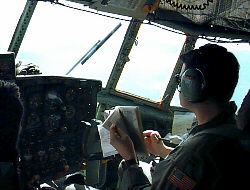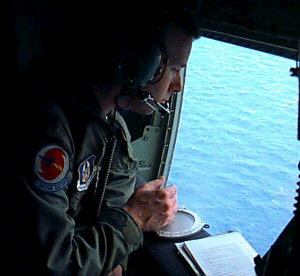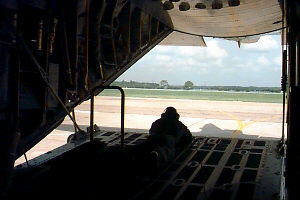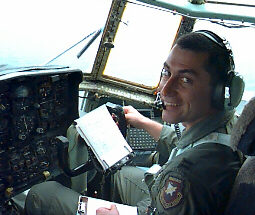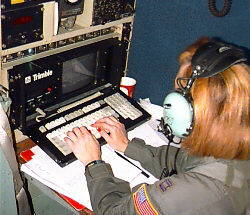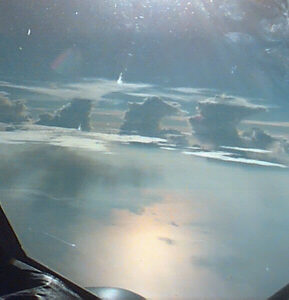HURRICANE HUNTERS
> Eye-to-Eye
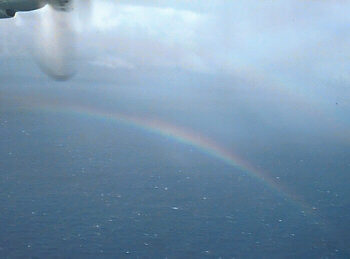 A brilliant rainbow paced alongside our WC-130 as we sliced through the mist. Rainshowers
dotted the seascape as we investigated a small tropical depression off the
Atlantic coast of Florida in early August. This storm formed about 400 miles east of Florida on
Aug 8th, and came within 70 miles of Cape Canaveral before it turned away and dissipated on
the 11th.
A brilliant rainbow paced alongside our WC-130 as we sliced through the mist. Rainshowers
dotted the seascape as we investigated a small tropical depression off the
Atlantic coast of Florida in early August. This storm formed about 400 miles east of Florida on
Aug 8th, and came within 70 miles of Cape Canaveral before it turned away and dissipated on
the 11th.
Our flights into developing tropical cyclones are flown very low, sometimes as low as 500 feet above the sea surface. On this flight, we found a sharp, 7-millibar drop in pressure at the center, where the winds crisply changed direction--a clearly defined tropical cyclone.

